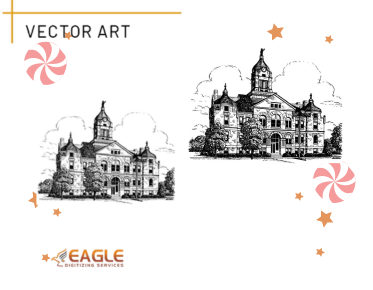Shape It Up: How to Use Path Editing Tools for Vectors
In the ever-evolving realm of graphic design, vector graphics stand out for their scalability and precision. They empower designers to create crisp, clean images that can be manipulated without losing quality. A key aspect of mastering vector graphics lies in understanding and utilizing path editing tools. With these tools, you can fine-tune every curve, shape, and line, elevating your designs to new heights.
Key Benefits of Optimizing Vector Graphics for Your Projects
Optimizing vector graphics ensures that your designs not only look fantastic but also perform well across various platforms. Optimized graphics load faster, maintain clarity on all devices, and can be easily edited in the future. Additionally, streamlined files reduce strain on software, improving your workflow and enhancing the overall design process. Investing time in optimizing your vectors pays off in both quality and efficiency.
Getting Started with Path Editing Tools
Exploring the Essential Path Editing Tools in Graphic Software
Path editing tools come in various forms, each with specific functions. The pen tool is a staple for creating and modifying paths, allowing for precision drawing and intricate designs. Selection tools enable users to select individual points or entire shapes for adjustment, while pathfinder tools assist in merging, dividing, and organizing paths. Familiarizing yourself with these essential tools is crucial for effective vector manipulation.
Overview of Popular Software: Adobe Illustrator, Inkscape, and CorelDRAW
While many graphic design programs offer path editing capabilities, Adobe Illustrator, Inkscape, and CorelDRAW are among the most popular. Illustrator is renowned for its extensive features and user-friendly interface, making it a go-to choice for professionals. Inkscape is a powerful, open-source alternative that delivers robust path editing tools without the hefty price tag. CorelDRAW also provides an intuitive platform, ideal for those who appreciate a more straightforward approach to design.
The User Interface: Navigating Path Editing Tools
Navigating path editing tools requires a bit of practice. In most graphic software, the interface is designed to be intuitive, featuring toolbars, menus, and panels that categorize different editing functions. Familiarize yourself with the layout of your chosen software; knowing where to find specific tools will save time and enhance your efficiency. Many programs offer customizable workspaces, allowing you to tailor your interface to fit your workflow.
Creating and Modifying Paths
Drawing Basic Shapes: Starting with the Pen Tool
The pen tool is the cornerstone of vector design, offering unparalleled control over path creation. To draw a shape, click to create anchor points, connecting them with straight lines. For curves, click and drag to manipulate the handles that control the curve’s depth and direction. With practice, the pen tool becomes an extension of your creativity, allowing for fluid, organic shapes that capture your vision.
Editing Anchor Points: The Building Blocks of Path Adjustment
Anchor points serve as the fundamental building blocks of vector graphics. By selecting and adjusting these points, you can alter the shape and flow of your paths. Use the direct selection tool to click on anchor points, dragging them to new positions or adjusting their handles to refine curves. Understanding anchor points is essential for creating smooth, polished designs.
Adding and Deleting Anchor Points: Customizing Your Shapes
Customization often requires adding or removing anchor points. Most software allows you to easily add points by selecting the path and clicking where you want the new point to appear. Conversely, deleting anchor points simplifies shapes, which can improve clarity and performance. However, be mindful—that removing too many points can lead to loss of detail.
Manipulating Path Segments
Understanding Path Segments: Curves vs. Straight Lines
Path segments are the lines that connect anchor points, forming the outline of your vector shapes. Understanding the difference between straight lines and curves is crucial. While straight segments are straightforward, curves require a nuanced approach, as they can dramatically affect the overall appearance of your design. Mastering the interplay between these segments enables you to create complex shapes with ease.
Using the Direct Selection Tool: Fine-Tuning Your Paths
The direct selection tool is your best friend for fine-tuning paths. It allows for precise control over individual anchor points and segments. Click and drag to adjust the position of points or alter the curvature of segments, creating the exact shape you envision. This tool is particularly useful for making subtle adjustments that can transform a good design into a great one.
Joining and Splitting Paths: Techniques for Greater Control
Joining and splitting paths gives you greater control over your designs. To join two open paths, select both and use the appropriate command in your software. This technique is handy for creating closed shapes from separate lines. Conversely, splitting a path allows you to divide complex shapes, enabling further manipulation and customization.
Applying Transformations to Vector Graphics
Scaling, Rotating, and Reflecting: Basic Transformations Explained
Transformations are foundational to vector graphics, allowing for dynamic adjustments to your designs. Scaling increases or decreases the size of your paths, while rotation pivots them around a specified point. Reflecting mirrors your shapes along a defined axis, creating symmetrical designs effortlessly. Mastering these transformations empowers you to create variations and adapt designs for different contexts.
Shearing and Distorting Paths: Creative Adjustments
Shearing and distorting paths are powerful techniques for creative expression. Shearing skews the shape along a specific axis, offering a sense of movement or dynamic energy. Distorting paths allow for exaggerated shapes, enabling unique and artistic designs. These transformations can breathe life into your graphics, giving them character and depth.
Using Transformation Tools for Precision and Accuracy
Transformation tools come equipped with options for precise adjustments. For instance, entering specific values for scaling, rotation, or reflection ensures consistency across your designs. Utilizing grids and guides during transformations enhances accuracy, allowing for perfectly aligned shapes. Precision is key in design, and mastering transformation tools will elevate your work.
Enhancing Your Graphics with Path Effects
Applying Stroke and Fill Styles: Adding Personality to Your Paths
Stroke and fill styles breathe life into your vector graphics. Strokes define the outline of your paths, allowing for variations in thickness and color. Fills provide color or patterns within your shapes, adding depth and character. Experimenting with different styles can transform a simple design into a visually striking masterpiece.
Using Gradients and Patterns: Techniques for Depth and Texture
Gradients and patterns elevate your graphics, adding dimension and texture. Gradients create smooth transitions between colors, imparting a sense of depth and sophistication. Patterns can introduce complexity and visual interest, transforming flat areas into dynamic spaces. Combining gradients and patterns with path editing techniques unlocks a realm of creative possibilities.
Understanding Clipping Masks and Their Uses in Path Editing
Clipping masks are invaluable for controlling visibility in your designs. By using one shape to mask another, you can reveal only the parts of the underlying graphic that fall within the shape's boundaries. This technique is perfect for creating intricate designs, where you want specific elements to stand out while keeping the rest of the graphic subdued.
Optimizing Vector Graphics for Performance
What Does It Mean to Optimize Vector Graphics?
Optimizing vector graphics involves streamlining your designs to ensure they perform efficiently across various platforms. This means reducing file sizes, ensuring compatibility, and maintaining visual integrity. An optimized graphic not only loads faster but also operates smoothly within design software, enhancing your overall workflow.
Reducing File Size: Tips for Cleaner Graphics
Reducing file size can significantly improve performance. Begin by simplifying complex shapes, and reducing the number of anchor points and paths where possible. Use simpler fills and strokes, and consider flattening unnecessary layers. Exporting in formats like SVG can also help keep file sizes manageable without compromising quality.
Identifying and Removing Unused Paths and Layers
Unused paths and layers can bloat your file size and complicate your design. Regularly reviewing and cleaning up your workspace helps maintain clarity and efficiency. Most graphic software provides tools for identifying and deleting unused elements. Keeping your file organized leads to a smoother design process.
Working with Complex Shapes and Illustrations
Combining Paths: The Power of Pathfinder Tools
Pathfinder tools allow you to combine multiple paths into a single shape, creating more complex designs effortlessly. Use these tools to unite, subtract, intersect, or exclude shapes, enabling the creation of intricate designs that would be difficult to achieve manually. Pathfinder tools are essential for any designer working with complex illustrations.
Using Compound Paths: Creating Intricate Designs
Compound paths enable you to create designs with both filled and transparent areas. By grouping multiple paths, you can create intricate shapes and designs that contain holes or cutouts. This technique is particularly useful for logos and icons, adding a layer of complexity that enhances visual interest.
Simplifying Complex Shapes: Techniques for Clarity
Complex shapes can often become unwieldy, making them difficult to manage and edit. Simplifying these shapes by merging paths or reducing anchor points enhances clarity and usability. This not only improves performance but also ensures that your design remains flexible for future adjustments.
Utilizing Advanced Path Editing Techniques
The Magic of Bézier Curves: Mastering Curve Control
Bézier curves are the essence of fluid, organic shapes in vector graphics. Mastering these curves allows you to create smooth, precise paths that define your design. By understanding how to manipulate the control handles of anchor points, you can achieve intricate curves that enhance the overall aesthetic of your work.
Applying Boolean Operations: Merging and Subtracting Shapes
Boolean operations provide powerful methods for combining shapes. By merging or subtracting paths, you can create unique designs that would be impossible to achieve through traditional methods. These operations allow for a creative exploration of form and function, enabling designers to craft innovative graphics.
Utilizing Smart Guides and Grids for Precision Placement
Smart guides and grids are invaluable for maintaining alignment and precision in your designs. These tools help ensure that elements are spaced evenly and positioned accurately. Utilizing grids can be particularly beneficial when working with complex layouts, ensuring that your designs remain visually appealing and organized.
Exporting and Saving Your Optimized Graphics
Best Practices for Exporting Vector Files
When it comes to exporting vector files, best practices ensure that your work remains intact and performs well across different platforms. Always check export settings to maintain quality and fidelity. Depending on the intended use—web, print, or animation—adjusting these settings is crucial for achieving optimal results.
Choosing the Right File Format for Your Needs
Selecting the appropriate file format is essential for preserving the integrity of your vector graphics. Common formats include SVG for web use, AI for Adobe Illustrator projects, and PDF for print. Each format has its advantages and specific applications, so understanding their differences is key to making the right choice.
Maintaining Quality During Export: Tips for Success
To ensure quality during export, keep an eye on resolution settings and color profiles. Choosing the right options prevents loss of detail and maintains the vibrancy of colors. Conducting test exports can also help identify any potential issues before finalizing your graphics. Should this post have fanned the flames of your interest in vector conversion online and you desire to delve deeper, don't hesitate to communicate with us.
Embracing path editing tools opens a world of creative possibilities. Experimentation is key—try out different techniques, explore various software, and don’t hesitate to push the boundaries of your designs. The more you experiment, the more you’ll discover what works best for your creative vision.



